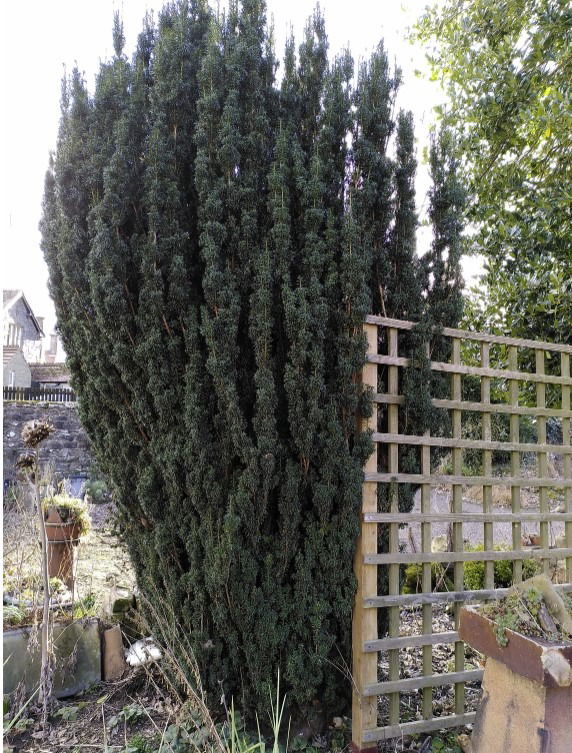Introducing the Fastigiate (or Irish) Yew.
Wednesday, 15 March 2023
Taxus baccata 'Fastigiata' (Irish Yew). This fine tree is in the Churchyard of All Saints, Rothbury. It was planted some time after 1900.
Look how it holds it branches upright, with clustered branches, narrowing at the top (fastigate). These trees are nearly all female and produce beautiful red berries. Growing at a rate of about 6-12 inches each year, this attractive evergreen tree can grow to 30 ft tall, and 8 ft wide. This species can only be grown from cuttings, because if they grow from the seed, they revert to common yew trees. It is believed that they originally were a 'mutant' from a common yew tree.
Poisonous!
It is well known that the needles and seeds of yew trees are toxic to livestock, other animals, and humans. If humans ingest the needles, seeds or bark, this can be fatal. The pretty berry of the Irish Yew contains only one seed. These berries are eaten by birds, and safely passed through.
Where was the FIRST Fastigiate Yew found?
The very first Fastigiate Yew was found in the mountains of Fermanagh (on the slopes of Cuilcagh) in 1767. A farmer, George Willis, found two unusual little seedlings, and he took one home, which he planted in his own garden. It lived until 1865. He gave the other one to the first Earl of Enniskillen, who was his landlord. The Earl, Lord Mount Florence, had the seedling planted on his estate, Florencecourt, County Fermanagh. It is still there now.
By the 1820s the Irish, or Fastigiate, Yew tree was being reproduced commercially. All Irish Yews throughout the world are believed to have come from the one at Florence Court. Florence Court ¦ Northern Ireland | National Trust ¦ Northern Ireland | National Trust.


Fastigiate, and Common Yew trees, provide food and shelter for a wide range of creatures. They are traditionally found in churchyards, and many common yews were actually in the graveyard before the church was built.
